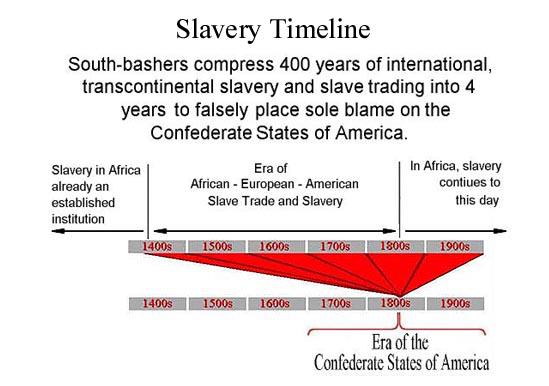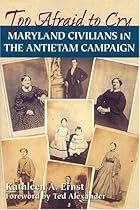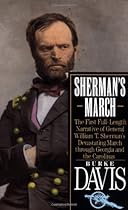If the issue of the approval for the Sons of Confederate Veterans Specialty plates revolved only around the honorable service of the men who served the Confederacy defending Texas from Union attack, the debate would be brief, the plates already approved. In the modern world, the battle flag of the Army of Northern Virginia is the single most recognized symbol of a region of the United States (the South) in the whole world. The crimson field framing the St. Andrews Cross has flown over Berlin when the Iron Curtain dividing Germany fell. And it flew in Afghanistan when the Soviet Union was driven from its occupation of that nation.
The Confederate battle flag is an international symbol of defiance, individual liberty and regional unity. While some white supremacist groups have attempted to abscond with the colors, the history and lineage of the colors place it on a platform of honor and sacrifice which cannot pervert its original meaning.
Though American revisionist historians in the late twentieth century attempted to corrupt the reputations of the men who fought under the crimson flag, Generals Robert E. Lee, Thomas “Stonewall” Jackson, Patrick Cleburne and many other southern patriots remain a noble corps of Christian Americans seeking an alternative government for Dixie. And it is this spirit and pride which drives the 2,400 members of the Texas Division to seek approval for the specialty license plate.
But alas, those who oppose approval of the plates have attacked the meaning of the Confederate battle flag on grounds not directly associated with its’ original purpose. Therefore, in order to defend the values of the men who fought under the Confederate battle flag, the following article has been penned here on Rebel Mountain in East Texas.
God Himself, may be the organizing dynamics behind the controversy in Texas. This article attempts to connect the history of secession and an alternative American Constitution, with the present day troubles and frustrations of our nation. The issues the United States face today, and the normally ignored causes of secession in 1860, combined with the creation of the Confederate States of America, (C.S.A.) provide a startling illustration of the relevance of the Southern nation to today’s troubles. The C.S.A. offered an alternative America, one which has much relevance today, and could provide a route to a new American future.
The Sons of Confederate Veterans, (S.C.V.) the Texas Division, the Confederate States of America and the South are all benefitting from the media interest associated in the division application for Texas specialty license plates. Governor Rick Perry's decision to enter and compete in the Republican primary contest for the nomination for President of the United States, has brought the American Civil War Sesquicentennial and our division's efforts to secure a license plate to the fore of the current national campaign. We see repeatedly that news agencies within Texas, and across the nation are contacting local and brigade S.C.V. representatives, and to some extent we are participating in interviews about the issue.
As of now, I have seen none of the interviews, and since I have not seen a standardized Fact Sheet produced and distributed across the division, or at the national level, I can only assume that the interviews are in no way coordinated or developed to send the same messages. Instead, local men, with varying degrees of historical and political knowledge are doing the best they can to respond.
During this ongoing series of events we see that our political opponents are able to hold Press Conferences, attract media attention, and organize their anti-Southern messages for the general public.
And of course, the Perry Campaign is doing what it feels necessary to react. Again, since I have seen no national reporting of the event, nor have I seen Governor Perry make any comments, I can only presume that the Perry campaign is doing the best it can to avoid the issue. Governor Perry and his operatives are running for President and do not feel a need to open up a can of worms by re-teaching American history and governance. Therefore, we cannot anticipate their reaction on this issue to be supportive of recreating an American foundation.
Further, Governor Perry’s avoidance of a detailed discussion of the causes of secession indicates just how non-conservative Governor Rick Perry is. You see, an open discussion of the application for the license plates provides a very unique, very American approach to the current campaign issues which face our nation, everything from open borders with Mexico, to industry bailouts, national health care, and the role of states. The topic of the license plate does provide an opportunity for a discussion of the modern role of the Tenth Amendment, but that is not something any of the Republican candidates have embraced as a center piece of their campaign.
Our opponents are attacking the Sons of Confederate Veterans application for specialty plates for one and only one reason, racism. They connect the Confederate battle flag to the slavery of 1861 - 1865 and to the racism of the mid-20th century. They tie the Confederate battle flag to the KKK and other white supremacist groups and by doing so attempt to strip away support from conservative America. This is their stratagem and it is neither unanticipated, nor ineffective. Many minorities, who have no real economic or social plans which they can openly explain and discuss, use racism as their lone card to play.
For our opponents this is a “bread and butter” no work issue. For decades they have used standardized assaults on the South to build and maintain name recognition for themselves, and unify their cohorts with mindless proclamations which occupy air time.
But for us, the 50 - 80 million Americans whose ancestors fought for the South, for those people who proudly belong to the Sons of the Confederate Veterans, and want to see the state of Texas issue our specialty license plates we have an arsenal of important political, historical, and social lines of argument which should be presented to the American people.
For years, decades, we have argued that the South left the Union for a number of reasons. However, we have done a relatively poor job of painting the full picture, of illustrating exactly what the differences were between North and South. Today, now, in this time, when the United States of America is seeing its national identity destroyed by both the Democratic and Republican parties, and global special interests, this argument concerning the Texas license plates is brought before the people of America by God. He, the Almighty God, has brought forward the history of one hundred and fifty years, and the causes of secession, and the alternative American democracy of the Confederate States of America so that Americans at the beginning of the twenty-first century can see that America could avoid much of what is occurring today. The problems we face are not inherent in our nation. No, instead, because of the Civil War, and the decisions made by Congress and the Supreme Court after 1865, we have chosen the malaise and complications we face today.
As the Lt. Commander of the Texas Division, Sons of Confederate Veterans, (responsible for Heritage Defense) I have given much thought to the points of argument I will now present for consideration by the members of the Sons of Confederate Veterans, by Texans, and by today's Americans. I offer these thoughts not as a line of argument to secure passage of the Texas license plates, but as a broader line of logic for the future of America herself.
For generations the issue of "slavery” has been an intellectual black hole which has acted as an impenetrable cloud covering secession and an alternative American democracy. Slavery was used to distract students from considering an alternative American government. There have been no serious discussions of an alternative United States because all of the Confederate modifications to the U.S. Constitution have been overshadowed by one issue, slavery. Slavery has been used to prevent students and Americans from considering all of the alternatives included in the Confederate Constitution. The evil of slavery has stood alone as the soul difference between the shattered Union and the rebel South.
But, the differences which were incorporated into the new Confederate Constitution were anticipatory of many of the largest problems we face today. The changes to the Confederate Constitution reflected a region and people who knew the formation of the United States some seventy years earlier, and who wanted to preserve those foundations. Had we done so, America’s future today would be much different.
So to begin this discussion of an alternative American democracy, and the Southern nation, let's quickly, completely, and without reservation condemn the institution of slavery for what it was; an American sin against man which should have never been brought to these shores by the Europeans and Americans from the northeast who operated the ships and markets which transported and sold slaves within the United States.
Slavery was NOT a uniquely Southern thing in the 16th century. The slaves brought to the western world were brought by the Euro powers and deposited all along the coasts of North and South America, and the islands of the Caribbean. The United Kingdom, the Netherlands, Spain, France, ( which continue to try to rule the world to this day ) facilitated the slave trade. It was the “globalism” of their time, an economic system intended to reap the benefits of the new world. Yes, the South did participate, and yes, the sin is as much that of the people of the South as the people of the North, or the people of South America. But slavery was not a uniquely a Southern thing. Like abortion today, where fifty million American souls have perished, slavery was an American thing.
Unlike the Northerners, Southerners hoped to build an agricultural, rural nation. Slavery was seen as the foundational means to help build this reality. Northerners who early realized slavery could not work above the Mason Dixon Line, did not free their slaves, or return them to Africa. Instead, they sold them south for profit. Slavery would eventually end in the north, after the Revolutionary War, but it was not due to northern Christianity and mercy, but as a result of economic necessity.
So let us here accept that slavery was a national sin, one equally caused by north and South, condemn it, and move to a discussion of the political and legal alternatives offered by the Confederate States of America in their Constitution.
With slavery condemned, let us now look at the alternative America of the Confederate Constitution. It is important to recall that the founders of the American Constitution saw the central government as a necessary evil. A central element behind the creation of the Constitution was this fear of an uncontrolled central government.
When considering where power came from, the Southern perspective first finds political sovereignty in God. From God, sovereignty passes to each individual. The individual surrenders a degree of sovereignty to the state. And then finally, the states shed a small piece of their power to the central government. To further insure that the federal government could NOT exercise power in certain areas, the Bill of Rights was offered simultaneous to the Constitution for approval by the states.
For a more in-depth knowledge of the early United States, the fear of a powerful central government and the roots of Southern political thinking I recommend to you “The South Was Right!” by James and Walter Kennedy.
The Confederate Constitution would incorporate a series of changes which when taken together created a new government with different character. The major changes within the Constitution include:
1. The inclusion of God in the Preamble where the Southern nation called for the protection and guidance of Almighty God. This open inclusion of a Christian God in the Preamble could very likely influence the moral aspects of national law throughout the centuries and avoid what is presently known as the doctrine of “separation of Church and state.”
2. The hope that a “less than perfect union” could survive by not challenging the power of the states.
3. That secession was an inherent right of the state, and therefore the ultimate check on central power.
4. That citizenship came only through birth within the Confederacy.
5. That the single six year term President was given sufficient power to operate the government and most importantly control spending.
6. That Congress was prohibited from using earmarks to pass legislation.
7. That 2/3’s of Congress must approve spending above that proposed by the President.
8. That the central government was prohibited from providing bail outs for industry, and was prohibited from acting on behalf of individual businesses,
9. The Confederacy was much more attuned to the global economy and sought trade as the source of many consumer goods.
A full discussion of these and other changes within the Constitution by learned professors at schools of higher learning could provide modern day America a whole new direction for national development.
What the Southern point of view offered was liberty, state integrity, local control, a fully integrated Christian faith into citizenship, and most importantly the preservation of values of George Washington, Thomas Jefferson and the other southern founders of our nation.
In the coming years the Sons of Confederate Veterans will be faced with a choice. As a not-for-profit organization we are responsible for the Charge given to us by Lt. General Stephan D. Lee. In that Charge we are asked to vindicate the Cause. In the past, vindication has meant ceremonies at cemeteries, marching in parades, participating in living histories and other relatively benign historical events. It is my view that to live to the Charge members of the Sons of Confederate Veterans must become politically active in reclaiming the ground which was originally America.
There is much to do, but men of Southern heritage are men who can do much working with God as their partner. So let’s get these plates approved and take one more step down the road of the Sesquicentennial.


































